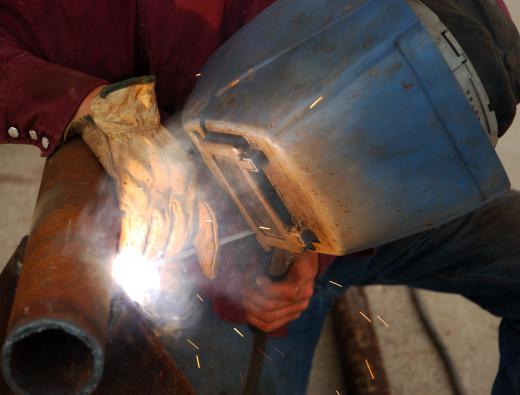A seal weld is a weld that performs the primary function of sealing joints. Seal welds are commonly used in gas or liquid containers to contain the gaseous or liquid substances and to prevent leakage. The presence of seal welds also prevents the gases or fluids from entering specific, off-limits areas where they may cause corrosion or other damage.
Seal welds are applied to parts that are to be galvanized. There are two types of ready-to-be galvanized joints, regular and vented, that can be welded together respectively with seal welding; there is also a third ready-to-be galvanized joint that does not require a seal weld. With regular joints, care must be taken to ensure that the seal welds are not so porous as to allow any kind of leakage. Vented joints are joints that have vents or holes in them to allow gas to escape out. When applying seal welds to vented joints, it is important to ensure that the vents are placed in proper locations; a build-up of gas might damage the joints otherwise.

It must be borne in mind that seal welds are placed only as containment measures and should not be expected to add to the joint strength. It is essential that the designer and the fabricator check that the seal placements agree with the code requirements specified by the American Welding Society (AWS), although code violations are allowed in certain cases that could affect the flexibility of the joints. It is also necessary to ensure that the seal weld does not inadvertently end up performing some undesirable structural function, or that the presence of the seal welds does not affect ultrasonic inspections too adversely.

The welder must be well-qualified to do the job, and needs to follow sound welding practices when making seal welds. Sound seal welding practices include adhering to specified weld sizes and heat input, selecting the right shaped electrode, and following the correct welding procedures. The proper heating time and welding pressure are necessary to ensure that complete fusion is achieved and that there is no chance that the seal weld may crack.

Application of seal welds is common in the food processing and engineering industries. Apart from pipes and containers, exposed steel elements undergo seal welding before being painted to avoid rusting. A pinch weld seal, which is also known as a trim seal or a rubber lock, is used in both refrigerator and car doors.
